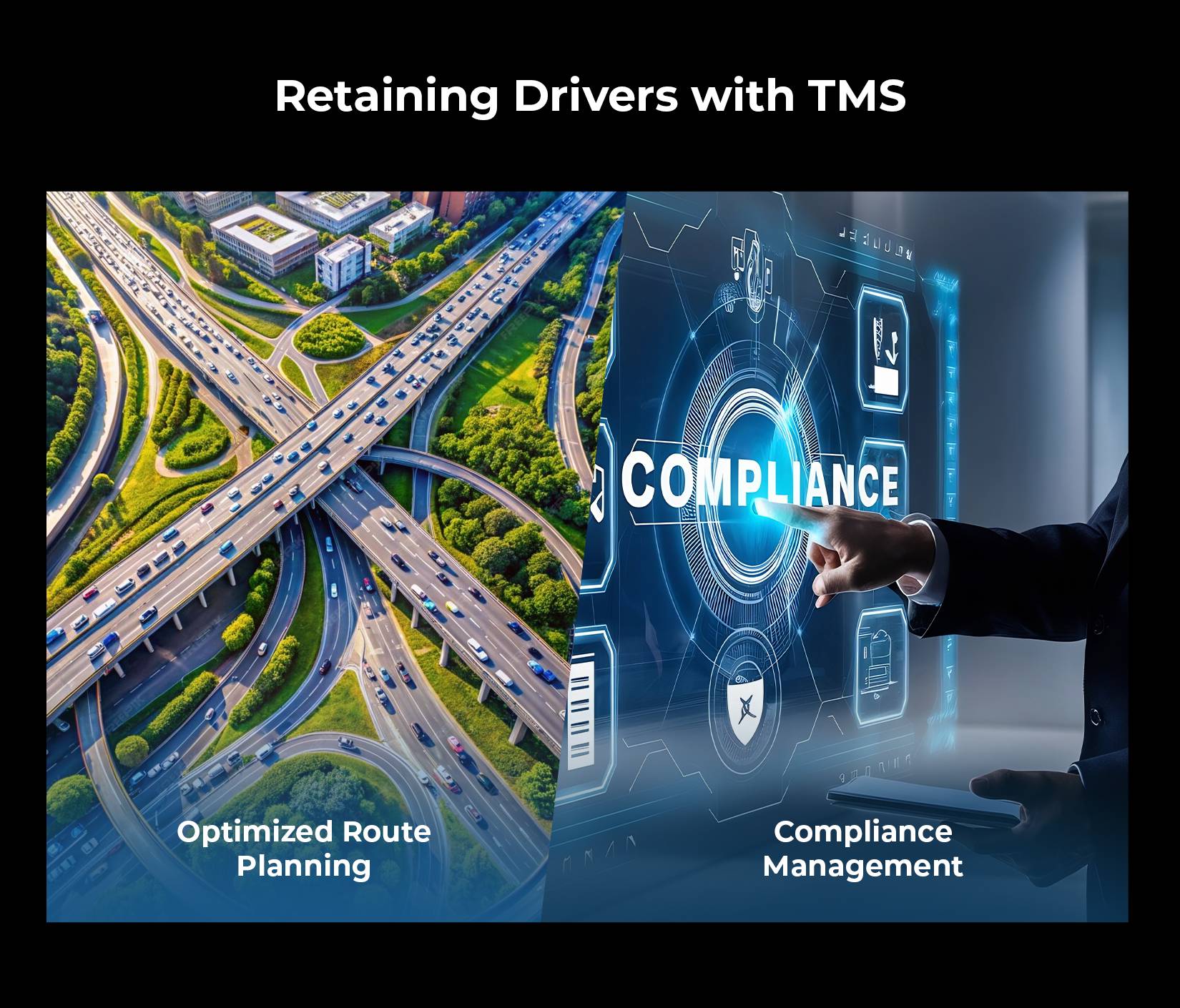
Overcoming Driver Shortages: Strategies for Effective Driver Recruitment with TMS
The logistics industry faces an ongoing challenge—driver shortages. With the demand for freight transport increasing, the gap between available drivers and necessary supply chain operations has widened. According to the American Trucking Associations (ATA), the U.S. could experience a shortage of more than 160,000 drivers by 2030. This poses a significant threat to businesses reliant on efficient deliveries. LogiNext’s Transportation Management Software (TMS) offer a powerful solution. When properly utilized, they can improve driver recruitment and retention while optimizing supply chain efficiency.
Let’s explore how leveraging the best transport management software can overcome the driver shortage problem.
The Current Driver Shortage Crisis
The driver shortage is driven by multiple factors—aging workforce, demanding work conditions, and regulatory constraints. Recruitment is a challenge, with fewer young drivers entering the profession. Additionally, retaining drivers in an industry marked by long hours, tight schedules, and complex regulations has become increasingly difficult.
However, addressing these challenges is crucial. Effective strategies, paired with the use of modern technology such as Transportation Management Systems, can ease the hiring burden. TMS can streamline recruiting, onboarding, and management processes, allowing companies to attract and retain talent more effectively.
Role of TMS in Enhancing Recruitment

1. Data Driving Hiring Decisions:
Modern TMS solutions offer insightful analytics that help companies target the right candidates. By integrating with Applicant Tracking Systems (ATS) or Human Resource Management Systems (HRMS), TMS can assess the experience, qualifications, and suitability of potential drivers. This data-driven approach ensures that the recruitment process is efficient and tailored to the company’s specific needs.
Moreover, automated workflows within TMS eliminate bottlenecks in the hiring process. Through predictive analytics, businesses can forecast driver demand, allowing them to act quickly when recruiting new talent.
2. Better Onboarding Process:
A key factor in driver retention is how smoothly drivers are integrated into the company. With the best transportation management software, companies can automate and streamline onboarding tasks. Digitizing paperwork, compliance checks, and route assignments reduces administrative burdens on both HR teams and new hires.
This efficient process boosts driver satisfaction right from the start, lowering turnover rates. Furthermore, TMS can help identify areas where additional training might be required, ensuring drivers are adequately prepared for their roles.
Boosting Efficiency through Automation
One of the key advantages of using LogiNext’s transportation management software is automation. Manual processes, such as route planning, scheduling, and dispatching, can be time-consuming and prone to human error. TMS automates these processes, allowing for quicker decision-making and reducing administrative overhead.
Automation can also assist in real-time monitoring of vehicle performance and driver behaviors. Tracking driving habits through LogiNext’s TMS allows companies to identify areas where additional support or training might be necessary, contributing to driver improvement and satisfaction.
Retaining Drivers with TMS

Retaining drivers is just as important as recruiting them. A transportation management software offers features that significantly improve the driver experience, keeping them satisfied and motivated.
1. Optimized Route Planning:
With TMS, businesses can implement smarter, more efficient route planning. Reducing unnecessary driving time and maximizing fuel efficiency is essential to reducing driver fatigue. By integrating TMS with advanced routing algorithms, companies can develop routes that reduce idle time and eliminate detours.
In a survey conducted by the National Private Truck Council, nearly 40% of drivers said they would consider leaving their jobs due to inefficient route planning. A TMS can mitigate this by optimizing routes based on real-time traffic and delivery requirements, thus enhancing driver job satisfaction.
2. Compliance Management:
Maintaining compliance with regulations, such as Hours of Service (HOS) rules, is crucial for reducing burnout. TMS enables automated tracking of hours, reducing the risk of overwork and ensuring drivers remain within legal limits.
Drivers are more likely to stay with companies that prioritize their well-being, and a TMS can provide real-time alerts to prevent overworking. This contributes to creating a safer and more driver-friendly work environment.
Attracting Young Drivers with Technology
The new generation of drivers is tech-savvy. They seek modern tools that simplify their work and improve efficiency. Using LogiNext’s transport management software helps companies appeal to these younger candidates by demonstrating that the organization values innovation.
The integration of mobile applications, telematics and real-time communication offered by TMS ensures drivers have the latest tools at their disposal. These features not only improve communication but also simplify everyday tasks, from updating delivery statuses to tracking hours worked.







@LogiNext